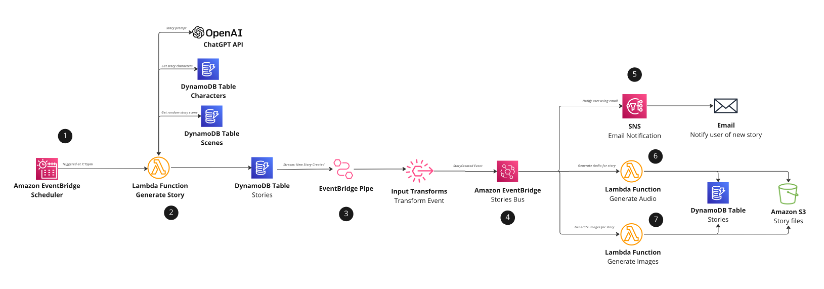AWS Compute Blog
Category: Storage
Hibernating EC2 Instances in Response to a CloudWatch Alarm
This blog post is written by Jose Guay, Technical Account Manger, Enterprise Support. A typical option to reduce costs associated with running Amazon Elastic Compute Cloud (Amazon EC2) instances is to stop them when they are idle. However, there are scenarios where stopping an idle instance is not practical. For example, instances with development environments […]
Sending and receiving webhooks on AWS: Innovate with event notifications
Webhooks are a popular method for applications to communicate, and for businesses to collaborate and integrate with customers and partners. This post shows how you can build applications to send and receive webhooks on AWS.
Quickly Restore Amazon EC2 Mac Instances using Replace Root Volume capability
This post is written by Sebastien Stormacq, Principal Developer Advocate. Amazon Elastic Compute Cloud (Amazon EC2) now supports replacing the root volume on a running EC2 Mac instance, enabling you to restore the root volume of an EC2 Mac instance to its initial launch state, to a specific snapshot, or to a new Amazon Machine […]
Enhancing file sharing using Amazon S3 and AWS Step Functions
In this blog post, you learn how you can securely share files with authorized external parties and track their access using AWS serverless services. The sample application presented uses Step Functions to allow you to extend and customize the workflows to meet your use case requirements.
Using and Managing Security Groups on AWS Snowball Edge devices
This blog post is written by Jared Novotny & Tareq Rajabi, Specialist Hybrid Edge Solution Architects. The AWS Snow family of products are purpose-built devices that allow petabyte-scale movement of data from on-premises locations to AWS Regions. Snow devices also enable customers to run Amazon Elastic Compute Cloud (Amazon EC2) instances with Amazon Elastic Block […]
Deploying low-latency hybrid cloud storage on AWS Local Zones using AWS Storage Gateway
This blog post is written by Ruchi Nigam, Senior Cloud Support Engineer and Sumit Menaria, Senior Hybrid SA. AWS Local Zones are a type of infrastructure deployment that places compute, storage, database, and other select AWS services close to large population and industry centers. With Local Zones close to large population centers in metro areas, […]
Deploying an automated Amazon CloudWatch dashboard for AWS Outposts using AWS CDK
This post is written by Enrico Liguori, Networking Solutions Architect, Hybrid Cloud and Sumeeth Siriyur, Sr. Hybrid Cloud Solutions Architect. AWS Outposts is a fully managed service that brings the same AWS infrastructure, services, APIs, and tools to virtually any data center, colocation space, manufacturing floor, or on-premises facility where it might be needed. With Outposts, […]
Introducing AWS Lambda response streaming
Today, AWS Lambda is announcing support for response payload streaming. Response streaming is a new invocation pattern that lets functions progressively stream response payloads back to clients. You can use Lambda response payload streaming to send response data to callers as it becomes available. This can improve performance for web and mobile applications. Response streaming […]
Serverless ICYMI Q1 2023
February 12, 2024: Amazon Kinesis Data Firehose has been renamed to Amazon Data Firehose. Read the AWS What’s New post to learn more. Welcome to the 21st edition of the AWS Serverless ICYMI (in case you missed it) quarterly recap. Every quarter, we share all the most recent product launches, feature enhancements, blog posts, webinars, […]
Implementing an event-driven serverless story generation application with ChatGPT and DALL-E
This post demonstrates how to integrate AWS serverless services with artificial intelligence (AI) technologies, ChatGPT, and DALL-E. This full stack event-driven application showcases a method of generating unique bedtime stories for children by using predetermined characters and scenes as a prompt for ChatGPT. Every night at bedtime, the serverless scheduler triggers the application, initiating an […]









